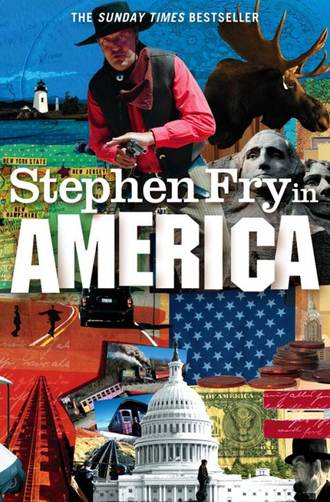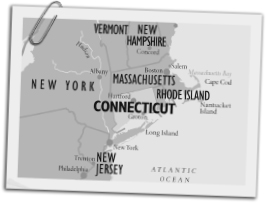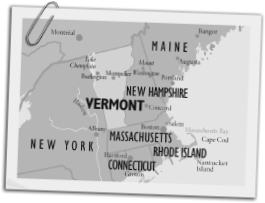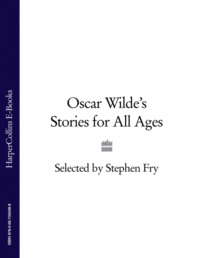
Полная версия
Stephen Fry in America
There are still some survivors living around Bellevue Avenue, however, and I have tea with one of them, the great Oatsie Charles, a wondrous wicked twinkling grande dame of the old school. The first president she ever met was Franklin D. Roosevelt, she attended the wedding of JFK to Jacqueline Bouvier and her talk is a magnificent tour d’horizon of high-born American family life – Hugh Auchincloss, Doris Duke, Astors, Mellons, Radziwills, parties, disputed wills, feuds, marriages, divorces and scandals:
‘She was a Van Allen, of course, which made all the difference … Bunny Mellon and C.Z. Guest were there naturally … Heaven knows what he saw in her, she can’t have had more than two hundred million which these days … she married the Duke of Marlborough. Calamitous error, we all saw that it would never do …’ All spoken in a luxurious and old-style Alabama accent elegantly mixed with an international rich aristocrat’s amused drawl.
‘I can’t tell you how beautiful even ugly people looked back then.’
‘Was it quite formal?’
‘Well, we dressed for dinner every night and all the houses were formally staffed. Handsome footmen in divine livery. We certainly never saw anyone looking like you …’ Oatsie wrinkles her nose in apparent disgust at the film crew who are dressed in the standard grungey outfit of shorts, t-shirts and sandals. ‘A man’s neck can be a thing of beauty,’ she adds, rather startlingly. ‘And yours,’ she indicates the sound recordist’s, ‘has all the qualities. Even yours, darling,’ she turns to me, ‘though yours is higher than most.’
The tea has turned rapidly to claret, served by a devoted butler, whose duty is also to transport his mistress around her messuage in a golf cart, upon which entirely silly conveyance Oatsie somehow managed to bestow the air and dignity of a fabulous Oriental litter. We go next door to the Big Mansion, for Oatsie now makes do in a converted chauffeur’s house which is big and beautiful enough in its own right, being full of her paintings, furniture and exquisite knick-knacks. ‘Land’s End’, the Big Mansion, built by the novelist Edith Wharton, the supreme chronicler of the Gilded Age, has been given by Oatsie to her daughter Victoria and son-in-law Joe.
A little gilt may have come off the Age and a little guilt may have been added, but from where I stood it was pretty Gilded still.
I am Sailing
Aside from the eye-popping, jaw-dropping, bowel-shattering wealth on display along the cliff walk, there is class of a trimmer, more elegant kind still flourishing in Newport. This is a wonderful place to sail and has been a centre of regattas and races for over a hundred years.
The greatest prize in sailing is of course the America’s Cup, ‘the oldest active trophy in international sport’, the great dream, the Holy Grail – The One. It was offered as a prize by the British Royal Yacht Squadron of Cowes, Isle of Wight in 1851, and was won by a boat called America, which is how the cup gets its name, though it might just as well have been because yachts from the United States have won it so consistently and for so long …
Enormous fortunes have been poured into chasing the cup and for 132 years it remained in America, for much of that time in Newport. Poor Britain, that great sailing nation, has won the trophy precisely zero times. The United States held it for the longest winning streak in history, testament to the remarkable qualities of American seamanship, marine savvy, nautical engineering skills and sheer damned money.
Most would agree that the Golden Age of America’s Cup racing was the late forties, fifties and sixties, the days of the 12-metre class yacht. In 1962, winning by 4–1 and watched by President and Mrs Kennedy, was the graceful Weatherly. She kept the cup in Newport, where it had been since 1930 and where it would remain until Alan Bond of Perth, Australia finally broke that winning streak in 1983. The Weatherly is now one of only three surviving wooden America’s Cup defenders in the world, the only yacht to have won the cup when not newly built. She is beautiful. My, she is yare, as Grace Kelly says about her boat the True Love in the film High Society, which is set, of course, in Rhode Island. The Weatherly is as yare as they come. She is now owned by George Hill and Herb Marshall who manage to keep her in tip-top racing condition and to make money from her by charter.
George, a fit and trim fifty-year-old with silver hair and a lean, outdoors face, watches me clamber aboard, pick myself up, trip over a sticky-up thing that had no right to be there, pick myself up again and fall down in a heap, gasping.
‘Welcome aboard,’ he says.
A crew of three barefoot limber girls and a barefoot limber youth are tying knots with their toes, hauling on winches and, without trying, outdoing Tommy Hilfiger and Ralph Lauren models for looks and style. Within a few minutes sails have been unfurled and ropes uncleated and we are under way. I take up a position next to George, who is manning the wheel and calling out mysterious commands.
This is real sailing, the power, speed and excitement is hard to convey. I have always been a physical coward in sporting endeavours, sailing not excluded. Being shouted at to ‘turn about’, having to duck as great beams swing round to bang you on the head, leaning over precipitately, simply not understanding what is going on, having words like ‘tack’, ‘jib’, ‘sheet’ and ‘cleat’ hurled at you … my childhood was full of such moments, growing up as I did in a nautical county like Norfolk and I long ago decided that sailing was for Other People. I do not especially mind being asked as a guest on board a boat, so long as I do not have to do anything more than sip wine.
George has other ideas. If I am to go on board the Weatherly then I am to pay my way by crewing. He is very kind but very firm on this point as he steps aside for me to steer.
‘You’re luffing,’ he says.
‘Well, more a bark of joy at the blue sky and the crisp …’
‘No, not laughing, luffing. The canvas is flapping. Steer into the wind and keep the sail smooth.’
‘Oh right. Got you.’
George is a proud Rhode Islander. ‘Rhode Island is known to most Americans as a unit of size,’ he says. ‘You hear news stories like “an iceberg broke off Antarctica bigger than the state of Rhode Island” or “So and so’s ranch is bigger than Rhode Island”. Try to come up just a little bit. Once you’re on the breeze like this just little small slow adjustments. That’s good, just there and no higher. The Rhode Island charter of 1663 is an amazing document. It contains all of the concepts of freedom of speech and freedom of religion at a time when – you’re luffing again … when she loads up like that, just straighten her out.’
Strangely I enjoy myself. I enjoy myself very much indeed. I will go further. I have one of the most pleasurable days of the 18,330 or so I have spent thus far on this confusing and beguiling planet. The speed, the precision, the astounding power bewitched me: it was a glorious day, Newport Sound and Narragansett Bay sparkled and shimmered and glittered, the great bridges and landmarks around Newport shone in clean, clear light. You would have to be sullen and curmudgeonly indeed not to be enchanted, intoxicated and thrilled to the soles of your boat-shoes by this fabulous (and fabulously expensive) class of sailing.
Farewell, Rhode Island. Farewell too any lingering belief that America might be a classless society … I luff myself silly at such a thought.

CONNECTICUT
KEY FACTS
Abbreviation:
CT
Nicknames:
The Constitution State, The Nutmeg State
Capital:
Hartford
Flower:
Mountain laurel
Tree:
Charter white oak
Bird:
American robin
Motto:
Qui transtulit sustinet (‘He who is transplanted, still sustains’ – Hm, loses in translation I suspect)
Well-known residents and natives:
Aaron Burr, Dean Acheson, George W. Bush (43rd President), Benedict Arnold, Ethan Allen, Noah Webster, Samuel Colt, P.T. Barnum, J.P. Morgan, Charles Goodyear, Charles Ives, Al Capp, Benjamin Spock, William Buckley, John Gregory Dunne, Ira Levin, E. Annie Proulx, Rosalind Russell, Katharine Hepburn, Robert Mitchum, Ernest Borgnine, Ed Begley, Paul Newman, Joanne Woodward, Glenn Close, Meg Ryan, Christopher Walken, Christopher Lloyd, Seth McFarlane, Gene Pitney, Dave Brubeck, Karen and Richard Carpenter, Jose Feliciano, Michael Bolton, Moby.

CONNECTICUT
‘My travels so far have already taught me that Nature did not fashion Stephen Fry to serve in submarines …’
Only Delaware and neighbouring Rhode Island are smaller than the Constitution State. As it happens, the seven smallest states in mainland America are all in New England and most, like Connecticut, make up in history, wealth, population density and dazzling scenery what they lack in size.
The name derives from the Mohican word quinnitukqut, which Scrabble-winning entry apparently means ‘place of long tidal river’. This doesn’t quite satisfactorily explain the silent second ‘c’ in my opinion. Never mind. It all adds to the mystique.
The whole of Connecticut’s shoreline faces Long Island and the body of water is therefore Long Island Sound rather than open Atlantic Ocean. This geography leads to a calm and balmy climate and a strategically ideal situation for submarine pens.
My taxi and I are headed for Groton, CT, where on the River Thames in New London can be found the United States Navy’s Submarine Base, ‘the Submarine Capital of the World’.
The Springfield
I am led on board, well, shoved down a tight, clambery hatchway and here I am, in a nuclear submarine, all six foot four and a half of me.
I am shown round by Petty Officer James Poton, a shy, soft-spoken and highly intelligent young man who answers my footling questions with grace and humour.
‘And here, Stephen,’ Americans like to use first names as much as possible, ‘is the control room. This is where we dive and drive the boat from. We have a helmsman and a planesman who controls the rudder and bow planes, then over here you have the stern planes on the back of the ship.’
‘Wow. And this is the weapons station is it?’ I point at a collection of screens and controls.
‘Stephen, this is exactly where the solutions for the weapons are plotted. Fire control takes bearings from Sonar and they plot solutions on the contacts.’
‘It’s like a gaming arcade.’
‘Actually, Stephen, this weapons lodge console is a little more expensive than a typical arcade game.’
I suppose James is used to visitors asking what the various buttons and screens are for and, in particular, he must be accustomed to hearing them beg to be allowed to use the periscope. This is a big moment for me: countless films and TV series can’t prepare one for the actual feeling of that device under one’s control, with its fluid hydraulic hiss and gently insistent physical pull. I spin it around, pulling on its motorcycle throttle zoom and burbling a mixture of Royal Navy (Above Us the Waves) and US (Crimson Tide) Navy jargon. ‘Now hear this. You have the conn, Number One. Steady … steady … up ‘scope, chaps …’ and so on.
We are aboard the Springfield, a hunter-killer nuclear submarine built for the great Cold War game that was played out across the oceans of the world between the US and the USSR for more than forty years. Nowadays the Springfield is mostly deployed for … oh, I am so sorry, I am not allowed to tell you or I would have to hunt you and kill you. Let us just say there are still uses for a nuclear submarine in today’s volatile world.
Actually, PO Poton does attempt to explain to me what the strategic purpose of the nuclear submarine fleet in the post-Cold-War era is, but it seems all a bit vague and jargon-rich for me to grasp. Either that or I am too obsessed with the quotidian detail of life on one of these cramped tubes. Everywhere I bump my head. Everywhere I am in the way. There is nowhere to sit down unless you are eating or operating some fearsome communication, navigation or weaponry technology. Every single spare inch of wall and ceiling (though where one ends and the other begins is a moot point) is taken up with wiring, ducting, piping, lagging and strange snaking coils of nameless substance that terminate every now and again in a switch or control panel. For all the astounding quantities of money these babies cost, they are severely, but severely functional. Not one penny appears to have been expended in the service of aesthetics or fun. Which is, I suppose, as it should be.
The sleeping quarters or ‘racks’ are cruelly Spartan. The only concession to privacy a thin curtain, the only offering to spare time an LCD screen screwed into the rack above, fed by a Sony PlayStation, so that DVDs and games can be enjoyed lying on one’s back.
On the wall of the mess, which is in reality like a small traditional roadside diner, hangs an original Springfield Rifle, in honour of the town of Springfield, Massachusetts, even though the vessel is in fact named for Springfield, Illinois (it being a naval tradition to name submarines after state capitals) – otherwise, aside from the obligatory ketchup and hot-sauce bottles, there is not much to see. No exterior view of course, no portholes.
It seems to me inconceivable that men (and only men can be submariners in the United States Navy) could spend any length of time in one of these without being sent entirely mad. I cannot imagine myself ‘under way’ for more than two days without screaming to be let off.
‘What’s the longest tour of duty?’ I ask.
‘Stephen, it’s about six months.’
‘Good Lord. Any more and I suppose you’d all go mad?’
‘Actually, Stephen, the only consideration that limits how long we can be under way is the amount of food we can carry. We could stay out indefinitely if we could carry enough provisions.’
James and all the other submariners I speak to say that they cannot wait to be under way again. Aside from missing their families, they love it, life below the waves.
I can’t even console myself with the thought that it is because they are all short enough to nip about without banging their head every five minutes, for I meet an officer who is at least two inches taller than me.
‘What’s your greatest fear when you’re under way?’
James looks at me. ‘In a word, fire, Stephen.’
That was two words, but I let it go.
Fire Training
I say my goodbyes to the crew of the Springfield and am escorted to the fire-drill training centre on the base.
Fire is as great an enemy as the one a submarine crew may be tasked to hunt down. So much so that every submariner who goes to sea must take a fire-fighting course. I am to join a fire crew in the position of rookie submariner and be taught how to put out various different kinds of conflagration.
Once more I am made to look like ten types of doofus: all dressed up in hood, gloves, helmet, boiler suit and goggles, I loom and stagger about the place, a powerful hose in my hands, a liability to all.
Petty Officer McDade has been assigned the dread task of being my mentor for this drill. He recites to me, by heart, an explanation of the ‘Training Time Out’ or TTO which might be called at any time if there is an emergency:
‘A TTO may be called in any training situation when a student or instructor expresses concern for personal safety or need for clarification of procedures or requirements exists. TTO is also an appropriate means for a student experiencing undue pain, heat stress or other serious physical discomfort to obtain relief.’
Mm. Undue pain and heat stress, eh? I begin to sweat under my goggles.
‘TTO shall be called verbally and/or using the hand signal, a raised fist accompanied by a waving motion as necessary to attract attention. The exercise shall be stopped, the situation shall be examined …’
The idea is for me to rush into a replica of the submarine engine rooms which will be on fire. PO McDade will be in front of me and a guy called Ralph behind. Between us we will be carrying the hose.
‘Don’t kneel, make sure you sit on your haunches,’ says Ralph.
‘Oh. Why’s that?’
‘The radiation of heat to the metal deckplates could burn your knees.’
‘Fair enough.’
‘I will start,’ says McDade, ‘then, at a signal from me, you will take your right hand to the front of the hose …’
‘Which will be bucking like a bronco,’ adds Ralph, helpfully.
‘You will grab the pistol grip and we will swap places. I go to the back of the line, while you take over fire-fighting duties.’
‘I will be behind you supporting you to make sure you don’t fall over,’ says Ralph.
‘Which way is the pressure of the water likely to impel me, back or forward?’
‘Yes.’
My travels so far have already taught me that nature did not fashion Stephen Fry to serve in submarines, to race yachts, to hunt the wild lobster or to run for political office – to that list I can now confidently add ‘to fight fires’.
I have a feeling, however, as I leave Connecticut and point the taxi back north to the state of Vermont that something awaits me there that will suit me right down to my socks.

VERMONT
KEY FACTS
Abbreviation:
VT
Nickname:
The Green Mountain State
Capital:
Montpelier
Flower:
Red clover
Tree:
Sugar maple
Bird:
Hermit thrush
Motto:
Freedom and Unity
Well-known residents and natives:
Chester Arthur (21st President), Calvin Coolidge (30th), John Deere, Joseph Smith, Brigham Young, Sinclair Lewis, Pearl S. Buck, Jamaica Kincaid, John Irving, David Mamet, Rudy Vallée, Elizabeth Perkins, William H. Macy, Felicity Huffman, M. Emmet Walsh, KT Tunstall.

VERMONT
‘Stephen, you created an ice-cream flavour. And it was good. Now you may rest.’
Vermont, Vermont, how beautiful you are.
Not the absolute last place in which you would imagine Rudyard Kipling writing ‘Gunga Din’ and The Jungle Book, but surely not the first, either. Yet he did. And ‘Mandalay’ too, ‘where the flyin’-fishes play’, in Battleboro, VT, the home of his American wife, Carrie.
I reckon that if you ask the average American what they know of Vermont, the first thing they will mention is maple syrup. You will notice that the sugar maple is the State Tree of Vermont – it is also more or less the state industry. The maple brings tourists who come to marvel at the blazing colours of the autumn leaves and it brings cash dollars in the form of the unctuous, faintly metallic syrup that Americans like to pour all over their breakfast, on waffles and pancakes certainly, but on bacon too. Sounds alarming to English ears, but actually it is rather delicious. Like crack, crystal meth and Chocolate HobNobs, one nibble and you’re hooked for life.
I am here a little late in the season for catching the legendary beauty of Vermont’s fall. The best days for ‘leaf peeping’ have gone and the time of maple tapping is yet to come. However, I have seen plenty of fiery reds, incandescent yellows and screaming oranges in other states so I do not feel deprived.
What else does Vermont have to offer? Not a thrusting metropolis, that is for sure. Montpelier is the smallest of all the state capitals, with a population of barely eight thousand. The nickname Green Mountain State suggests pastureland, and pasture suggests cows and sheep and goats, and cows and sheep and goats suggest dairy produce – milk, cream and cheese. There is a bastard concoction that dares to call itself ‘Vermont Cheddar’ but that we will ignore, presenting it with the coldest of British shoulders. No, I am in search of a product altogether more desirable, a world more indulgent and disgraceful, wholly addictive and dreadful and proudly American: it is the prospect of this which has me hurtling northwest with the intense concentration and merciless swiftness of a shark streaking towards blood in the water. Except that sharks don’t drool and shout ‘Come to mama!’
It was in 1978 that the two sainted hippies, Ben Cohen and Jerry Greenfield opened their first ice-cream parlour in Burlington, Vermont’s largest town. After many adventures, tribulations and law-suits against Häagen-Dazs they established themselves as just about the best-known brand in ice-cream. Their eco-friendly pint pots, chatty labels and jokey punning flavour names (‘Vermonty Python’, ‘Cherry Garcia’, ‘Karamel Sutra’, etc.) have established them as the prototypical anti-suit corporation, and a great influence on other food companies who want to present a healthy, cheery, laid-back image. There is a question as to whether or not the company, which has since been sold to the giant Unilever Corporation, behaved with just as much restrictive meanness when it came to distribution as their original rivals Häagen-Dazs, but they certainly won the branding wars. Everyone loves Ben and Jerry’s. They’re so like ‘hey!’ and they chat to you on the labelling and they’re your friend.
The factory in Waterbury, VT, is about thirty miles southeast of Burlington and constitutes Vermont’s single biggest tourist attraction. The moment I arrive I feel like Veruca Salt standing at the gates of Willy Wonka’s Chocolate Factory. With golden ticket clutched in fist I want it and I want it now.
I am to be given the freedom of the ingredients cabinet, a chance to mix my own flavour. This is an honour rarely bestowed. It is as if Château Margaux asked me to blend their cabernet sauvignon and merlot for this year’s vintage. Well, all right, it’s nothing whatever like that, but it is a great honour nonetheless.
‘Welcome, Stephen, we’re very excited that you’re here!’ says Sean, the flavourologist. ‘But if you’re gonna mix like a pro, you’d better dress like a pro.’
He hands me a white lab coat while I ponder the task before me.
The base, I decide, should be of good vanilla-bean ice-cream, nothing more fancy than that. To hand are spatulas, spoons and little pots and bags of semi-frozen ingredients: cookie dough, biscuity substances, chocolate in the shape of a cow and so forth. I try to stay calm. I mustn’t be too childish about this, as what little dignity I have left is at stake. The temptation to produce a pink confection filled with marshmallows, strawberries and cake mix is strong, but I feel the need to fly the flag for British style and discretion. I find an ingredient called English toffee and swirl it into the vanilla base. Good. Not the kind of hard black toffees Kensington nannies gave children in their prams to keep them quiet while they kissed the footman, but a good start. To this promising base I add chocolate fudge, a gloopy substance that freezes when added to the ice-cream, like a lava flow meeting water. A granulated texture is added with which I feel well pleased.




